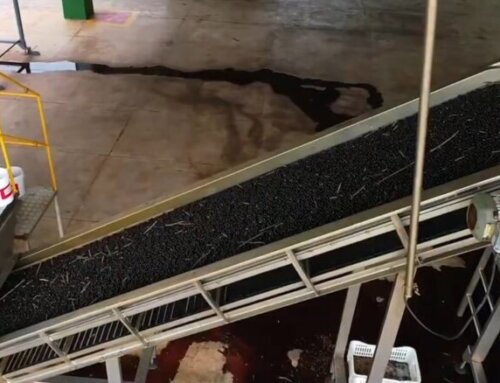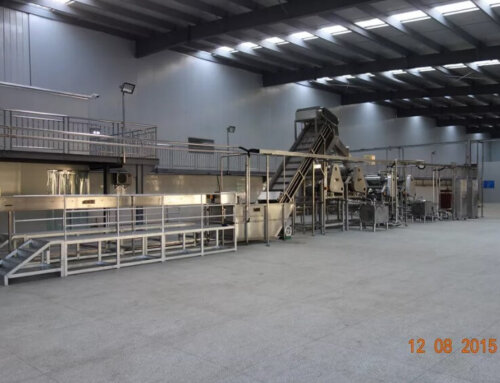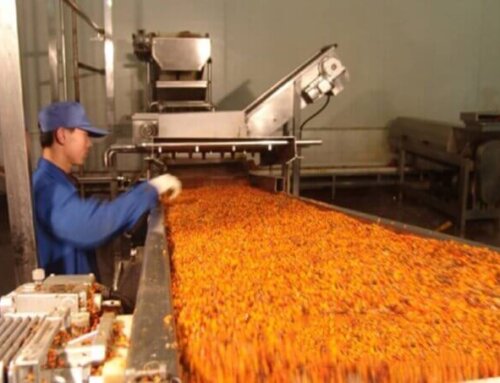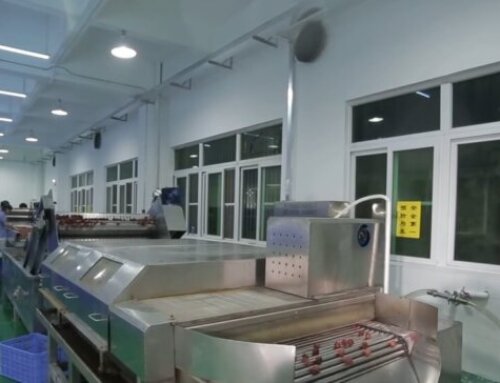Project Description
Papaya Processing Line
Pawpaw/ Papaya Processing Line Description
1. Papaya is also called pawpaw, it is a tropical fruit having commercial importance because of its high nutritive and medicinal value. Papaya cultivation had its origin in southern Mexico and Costa Rica. Total annual world production is estimated at 6 million tonnes of fruits. India leads the world in papaya production with an annual output of about 3 million tonnes. Other leading producers are Brazil, Mexico, Nigeria, Indonesia, China, Peru, Thailand and the Philippines.
2. Papaya/pawpaw fruits size ranges from 15-45cm in length and 10-30cm in diameter, when the papaya is ripe, the fruit pulp is soft, and the fruit is composed of peel, pulp and seeds, so when we proceed the papaya pulp, we need to remove the fruit peel and seeds to obtain the papaya pulp.
3. The papaya is rich in nutrients, sweet in taste, soft and juicy. It can be eaten raw or proceed into the puree or juice. Papaya puree is rich in vitamin A, vitamin B1, vitamin B2, vitamin C, mineral iron, calcium, and potassium. It also contains Natural plant polysaccharides, proteins, papaya enzymes and organic acids. The polyamino acid contained in it includes all the essential amino acids for the human body, which is rich in nutrition.
4. The papaya fruit processing machines include papaya washing and sorting machine, papaya blanching machine, papaya peeling and deseeding machine, papaya pulp refiner machine, papaya puree evaporator, sterilizer and filling machine. CIP cleaning system for papaya processing plant.
5. The papaya processing plant can proceed fresh papaya into papaya pulp, papaya puree papaya sauce/jam and papaya juice. And the capacity of the papaya processing machine is from 10T/D-1500T/D.
6. The papaya processing line/equipment are all made of SUS304 food-grade material to ensure the hygiene condition of the line; Electronic control parts for the processing machines adopt to world-class famous brands to ensure the performance and efficiency of the production lines.
Papaya Processing Line End Products And Package
Papaya puree: The single strength papaya puree is 8 Brix, and the concentrated papaya puree is 30 Brix. PH value is 3.5-4.2. Consistency is 2-7 Bostwick. The single-strength puree can be filled into pouches or aseptic bags; the concentrated puree can be filled into 220kg aseptic bags. The papaya puree can be used in many food and beverage applications such as marinades, salad dressings, and sauces.
Papaya juice: The papaya juice is made from single-strength papaya puree or concentrated papaya puree, and blended with other flavor ingredients, after homogenized, pasteurized, then filled into small containers like bottles, tin cans, aseptic cartons or pouches.

Papaya Processing Line Technological Flowchart
The fresh papaya will be dumped into the air bubble washing machine by bin tipper for washing the foreign matters like sand, insects, dust, then the clean papaya will be lifted by one scrape elevator to the sorting conveyor, where the operators will sort out the damage and rotten fruits to keep the high-quality fruits, then the high-quality fruits will be fed into peeling and deseeding machine, here we use the roller type extractor to peel and remove part of the seeds, then the papaya will be cooked by steam or hot water to soften the papaya mash and inactivate the enzyme of the fruits. After preheating and cooking, the papaya mash from preheater will be pumped into the refiner and finisher to remove all the seeds and coarse fibers. Finally, we got the papaya puree, and to remove the black specks of the papaya puree, one decanter centrifuge will be applied, and then the papaya puree will be sent to evaporator and sterilizer to get the concentrated puree or directly fed into the sterilizer to obtain the single strength puree.

Key Machine Of Papaya Processing Line
Papaya Bin Tipper
The bin dumper is an open-frame structure constructed from angle and channel iron. A bulk bin full of papaya (wet weight 800-900 pounds) can be placed on the dumper, which then slowly tilts to empty the fruits into air bubble washing machine for washing.

Papaya washing and sorting machine
The papaya fruit in air bubble washing tank is soaked to remove soil and other foreign material. The raw fruit is then conveyed from the water tank to be inspected, and any damaged or decayed fruit removed or trimmed. Some manufacturers rely on brush washers to remove any decayed areas on the fruit to eliminate patulin producing mold spots from the papaya. Sorting and trimming papaya to remove damage or decayed fruit is mandatory. If not removed, damaged or decayed fruit may also impart off-flavors to the finished product and increase the risk of microbiological contamination.


Papaya peeling and deseeding machine
The roller type extractor is applied to remove the skin and seeds of papaya. The papaya lift to the receiving hopper of extractor, a horizontal knife fixed between two counter rolling cylinders cuts the papaya into two halves, then the half fruit is dragged by the rolling cylinders along the squeezing channels: here the juice comes out and is filtered through a perforated stainless steel sieve, and the peel and seeds will be discharged from the two end screw conveyors. The papaya pulp yield rate reaches 60% with this machine.

Papaya pulp preheater
The papaya pulp is pumped through a tubular heat exchanger, heated for about 1 to 2 minutes at 92-95℃, then cooled to 30℃. This process is sufficient to inactivate the enzymes responsible for gelling and off-flavor development.

Papaya pulper and finisher
The papaya pulp refiner and finisher’s main function is to remove the remaining seeds and fiber tissue in the pulp, the refiner screen sieve diameter is 0.5mm, the rotary speed of the paddles is about 1400-1700 rpm, The puree comes out through the screen of the pulper and drops into the hopper below the screen. The pulper must be adjusted so that unbroken seeds come out of the waste port with a minimum of puree entrained with the seeds.

Papaya puree evaporator
The forced circulation evaporator is used to produce Papaya puree concentrates. The evaporator absorbs the water content from the fruit pulp and gives uniform consistency for the concentrate products. The single-strength puree is 8-10 Brix, and after concentration, the pulp is 28-30 Brix.
A papaya puree evaporator is a specialized equipment used for the concentration of papaya puree by removing water through evaporation.
The heated papaya puree is then fed into the vacuum chamber, where the pressure is reduced to a level that allows the water to evaporate at a low temperature. The evaporated water is then condensed by the condenser and collected separately, while the concentrated papaya puree is discharged from the evaporator.
The papaya puree evaporator may have additional features such as a preheating system, a control system, and a cleaning system, to improve its efficiency and ease of operation.
After the concentration process, the papaya puree can be further processed into products such as frozen papaya puree, papaya juice, or papaya nectar, depending on the desired end-use.

Papaya puree sterilizer
Papaya puree concentrated will be sterilized by a tube in tube sterilizer. The product is heated on the hot side of the tubular heat exchanger by circulating steam-injected hot water in a closed system. The puree should be heated at 92℃ or higher for a period sufficient to inactivate enzymes (1 to 2 minutes). About half of the tubes are on the cooling side, where the puree is cooled by indirect contact with cooling water, and cooling to 30℃ for packaging.

Papaya puree filler
The single-strength or concentrated papaya pulp after pasteurizing can be filled into soft bags or aseptic bags in drums or IBC containers at room temperature, then cooled down to -18℃ to freeze and store in the freezer. Under such conditions, the papaya pulp has a shelf life of 2 years.
The single-strength papaya pulp can also mix with flavors, sugar and acid, then after pasteurizing, homogenizing, and filling into stand-up pouches as baby food. The pulp will be pasteurized by hot water or HPP system after filling to get a stable shelf life.
For papaya juice, after pasteurizing, can be hot-filled into bottles or cans, after filling, the bottles or cans will be pasteurized again by tunnel pasteurizer.





